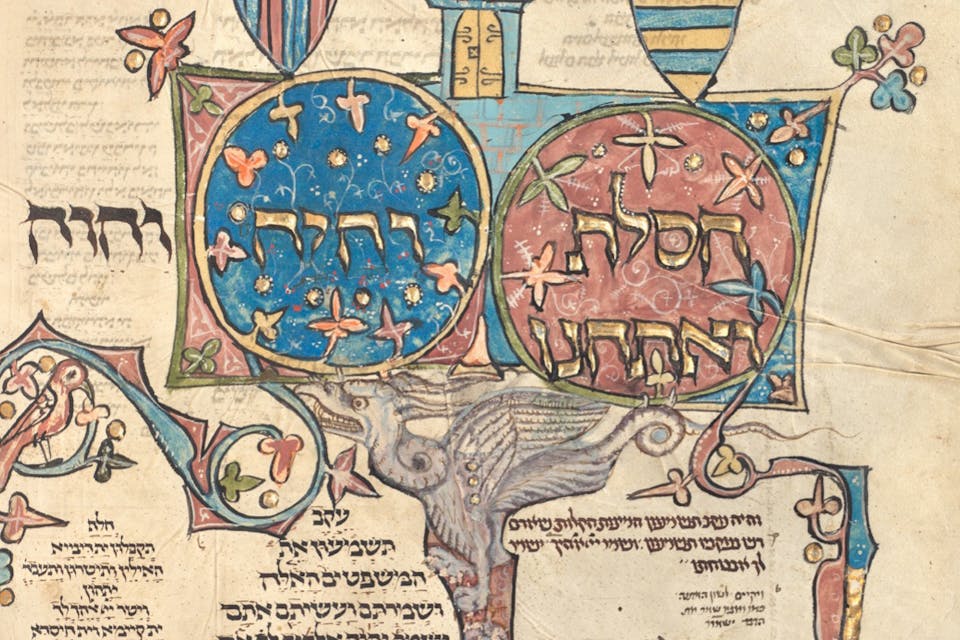
April 11, 2022
A Mysterious Erasure in a 700-Year-Old Manuscript of the Hebrew Bible
One recent Saturday morning, I was following the Torah portion from a late-13th-century manuscript and noticed some strange faded text and stress lines. What did they mean?
It’s not easy following the Torah reading from a 13th-century manuscript. The marginal drolleries—little decorated images—can be distracting, and the Masoretic notes and annotations persist in twisting themselves into interesting geometric (and other) forms. The Hebrew cursive for the Rashi commentary is impossible to parse, looking for all the world like a series of identical brushstrokes. And the text itself is compressed, quirky, hedged about with a thicket of vowels and cantillation marks intended to ease reading but in fact further cramping the already tightly-spaced text column. And how in the world is one to even see the tiny marks that indicate the ends of sections and readings? And yet following the Torah portion from a late-13th-century manuscript was precisely what I was doing one recent Saturday morning when a mystery appeared.
The manuscript in question is known as the Rothschild Pentateuch, a very exciting and relatively recent acquisition of the J. Paul Getty Museum and Research Center in Los Angeles. The Rothschild is a relatively little-studied manuscript, and I’m truly honored I was asked to participate with a group of other scholars in a seminar introducing it to the scholarly community last week. My mandate was to speak about the menagerie of illustrated creatures present in this Pentateuch. To help us prepare for the seminar, the Getty had sent each participant a complete set of scans of the manuscript on a thumb drive.
The Rothschild Pentateuch contains the Five Books of Moses divided for liturgical reading in the synagogue, followed by the liturgical prophetic readings, plus notes on the text and a commentary by the famous medieval French exegete Rashi. The codex was written in 1296 in what was then known as Ashkenaz—present-day northern France and western Germany—for the patron Joseph ben Joseph Martel, whom textual clues indicate was probably a refugee forced to flee England during the expulsion of 1290. The scribes were Eliyahu ben Meshulum, who did the main text, and Eliyahu ben Yeḥiel, who handled the micrography. The illuminator of the lively, beast-filled illustrations is unknown, though a missing leaf was replaced in the second half of the 15th century.